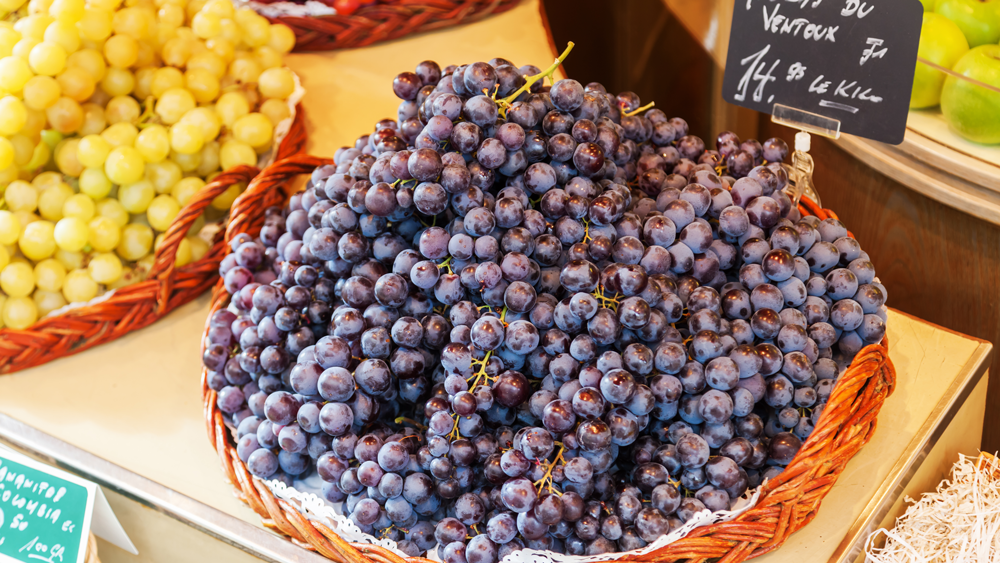When it comes to French grapes, we think automatically of wine. But not every bunch is destined for the next great vintage.
In France, grape season lasts from August to October and bunches for eating – raisins de table – come mainly from the south. French households eat about 4kg of grapes each year, although the history books tell us this is a relatively new phenomenon.
Vineyards were introduced to Europe by the Romans but grapes weren’t eaten at meals in France until Francis I ((1494-1547) planted Chasselas vines near Fontainebleau. But still, it didn’t catch on. Then phylloxera hit in the mid-19th century and laid waste to France’s winemaking industry. In desperation, farmers turned to growing table grapes instead and by the 20th century, the consumption of grapes as a fruit in their own right was well and truly here to stay.
These days, grapes are also used to make fruit juice, verjuice (which is used in the same way as vinegar), jam, raisins and more. The most popular raisins de table are Muscat, Chasselas de Moissac, Alphonse Lavallée, Italia, Moscatel, Cardinal and Prima. Many, such as the white Chasselas de Moissac and black Muscat du Ventoux, have Protected Designation of Origin (PDO) status.
Did you know?
Some 45,726 tonnes of table grapes were produced in France in 2022.
The pruine, the white deposit on the skin, is a guarantee of quality shows the grapes have not been over-handled.
Latest posts:
- An exclusive interview with Chef Alain Ducasse, the most Michelin-Starred Chef
- Fear not: Camembert and Brie are not going extinct
- ZappTax: The tax-free revolution for shopping enthusiasts in Europe
- Nine new restaurants awarded Michelin Green Star for sustainability
- 52 restaurants awarded one Michelin Star for 2024







